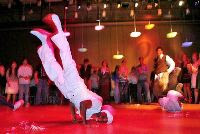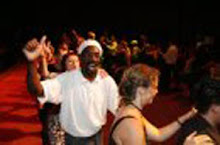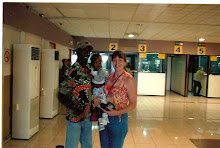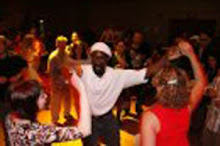The Roots and Rhythm of Salsa
Classical Cuban style salsa is known in Cuba as "Casino". Salsa originated in Cuba because of its unique blend of Spanish and African heritages. During the days of slavery in Cuba African Cubans danced the rhythms that had been handed down to them from their ancestors. One of the most well known African dances that is popular to this day in Cuba is called "rumba".
The slaves would mimic the classical and elegant couples dancing that came from Spain and France. Along the way the African dance known as "rumba" and couples dances from Europe became intermingled and dances known as "danzon", "son" and "chachacha" were invented. Cubans were further influenced by the immerging popularity of swing music around the world and this fusion of the African rumba, son, chachacha and swing became the fast paced, energetic dance we know as "casino" or "salsa".
The basic rhythm of each of these dances utilizes the African "clave" but the form of the dance comes from the European social position. Once the dancer understands the basic form the real fun begins. As you advance the moves build on combinations of the basic moves so that it becomes possible to easily remember a large repertoire of exciting moves.
Beginning 1 - In this class you will be introduced to social dancing in the Cuban form. You will learn six basic steps that form the foundation of all the combinations in this 4 part series of classes. These six basic steps are your key to mastering "casino". You will also gain a thorough understanding of the "clave" or rhythm by listening and dancing to a variety of songs known internationally as salsa. Basic ballroom partnering techniques will be emphasized and although a teaching wheel will be utilized Beginning 1 does NOT include rueda de casino.
Beginning 2 - This is the class to take when you feel that you have mastered the six basic steps that form the foundation of "casino". For those who took Felix's Beginning 1 class during one of the last two sessions join this class. You will learn to take the 6 basic steps and add embellishments to them to form new and exciting moves that will definitely impress your friends. During the 4th week of instruction "rueda de casino" will be introduced. "Rueda de casino" is a popular Cuban dance game of passing the follows around the circle. This exciting partner exchange MUST be done while constantly maintaining the salsa rhythm. This game was invented in Cuba to teach rhythm to beginners.
By the end of Beginning 2 you will be able to easily maintain the salsa rhythm and your enjoyment of the dance will be maximized! At this stage you may be in danger of becoming a salsa addict!
Intermediate 1 - Learn an entire family of moves involving something called "sombrero". This family of moves will further open up the endless possibilities for fun with "casino". At the intermediate level moves will be taught and danced in the "rueda" form to further maximize your ability to dance in the salsa rhythm. 80% of the moves are partner moves that will enhance your dance floor repertoire. Group moves for dancing only in a "rueda" will also be introduced. NOTE -this class isn't being taught this session
Intermediate 2 - This class combines everything learned in Beginning 1 and 2 and Intermediate 1. You will learn variations and complications of those moves in an easy- to- remember form that will help you take your dancing ability to new found heights! For this semester there will be an extra review of moves from the Intermediate 1 level. This class will combine partner moves, group moves for "rueda de casino" only and salsa suelta or solo salsa.
___________________________________________________
New York Hustle
The Hustle originated in Hispanic Communities in New York City and Florida in the 1970's and was hugely popular. It was originally a line dance with a Salsa-like foot rhythm, that after some fusion with swing and eventual shortening of the count to "&1 2 3", became the present day "New York Hustle".
As depicted in the 1977 film, Saturday Night Fever, the couple form of hustle has some resemblance to, and steps in common with, swing and salsa dancing. It is a slot style dance. The popularity of hustle has resurged and today entire dance congresses are dedicated to it.
In this class eight basic steps for "New York Hustle" will be taught along with an emphasis on the dance basics of posture, tone, frame, leading/following and body position. By the end of the class you will have mastered the basics and be ready to take your hustle to the dance floor.
Tuesday, January 6, 2009
Subscribe to:
Post Comments (Atom)






No comments:
Post a Comment